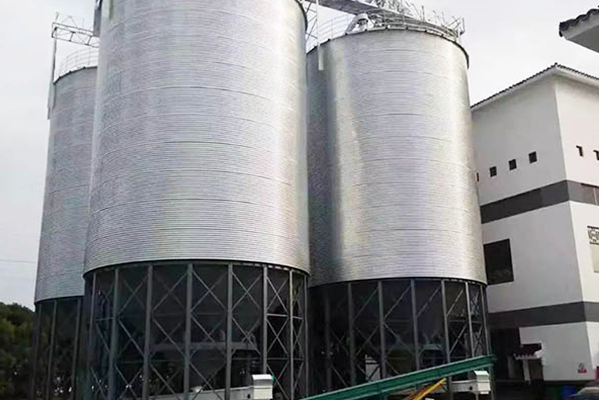Navigation Menu
Contact Us
- Email:
- info@wxavatar.com
- Address:
- Yurong Village, Yuqi Street, Huishan District, Wuxi, China.
Release Date:Aug 01, 2025 Visit:33 Source:Roll Forming Machine Factory
As the global agricultural industry expands, the need for efficient, high-quality grain storage solutions has intensified. To meet these growing demands, manufacturers of grain storage equipment are increasingly adopting automation across their production lines. Automation is no longer just an option—it is becoming a crucial element in the manufacturing process. But what factors are driving this shift, and how is it transforming the industry?

1. Enhancing Production Efficiency
One of the primary reasons automation is gaining importance is its ability to significantly improve manufacturing efficiency. Automated systems such as robotic welding arms, CNC roll forming machines, and automated punching lines reduce production time and increase output consistency. This allows manufacturers to meet larger orders in shorter timeframes, especially important as global demand for grain storage facilities continues to grow.
2. Ensuring Consistent Product Quality
Consistency is critical in grain storage systems, where structural integrity and precision impact long-term performance. Manual processes often carry the risk of human error, leading to deviations in measurements or assembly. Automated equipment ensures that every panel, ring, or component meets predefined specifications, improving product reliability and reducing the chance of costly rework.
3. Reducing Labor Dependency
As skilled labor becomes harder to source in many regions, automation offers a solution to labor shortages. Automated machines can operate for extended hours with minimal supervision, supporting continuous production. While human oversight remains essential, automation reduces the number of manual tasks, enabling better use of workforce for quality control and technical operations.
4. Supporting Customization and Flexibility
Today’s grain storage projects often require customized designs based on geography, climate, and storage needs. Automated systems with programmable logic can quickly adapt to produce different sizes, shapes, and configurations without extensive downtime. This flexibility supports the production of tailored solutions for both large commercial projects and smaller-scale installations.
5. Improving Workplace Safety
Grain storage equipment production involves tasks such as cutting, welding, and forming—processes that can pose safety risks. Automation helps minimize direct human contact with hazardous operations, creating a safer work environment. By delegating repetitive or dangerous tasks to machines, manufacturers can reduce workplace accidents and maintain compliance with safety standards.
6. Facilitating Global Competitiveness
Automation enhances a manufacturer’s ability to scale production and respond to international demand. Shorter lead times, better product consistency, and lower operational costs position automated manufacturers more competitively in the global market. For companies aiming to expand their presence across multiple regions, automation becomes a strategic advantage.

Conclusion
Automation is reshaping the landscape of grain storage equipment manufacturing. From increasing efficiency to enabling higher quality standards and safer working conditions, its impact is widespread. As market demands continue to evolve, automation will remain a key driver for manufacturers looking to stay ahead in an increasingly competitive and globalized industry.